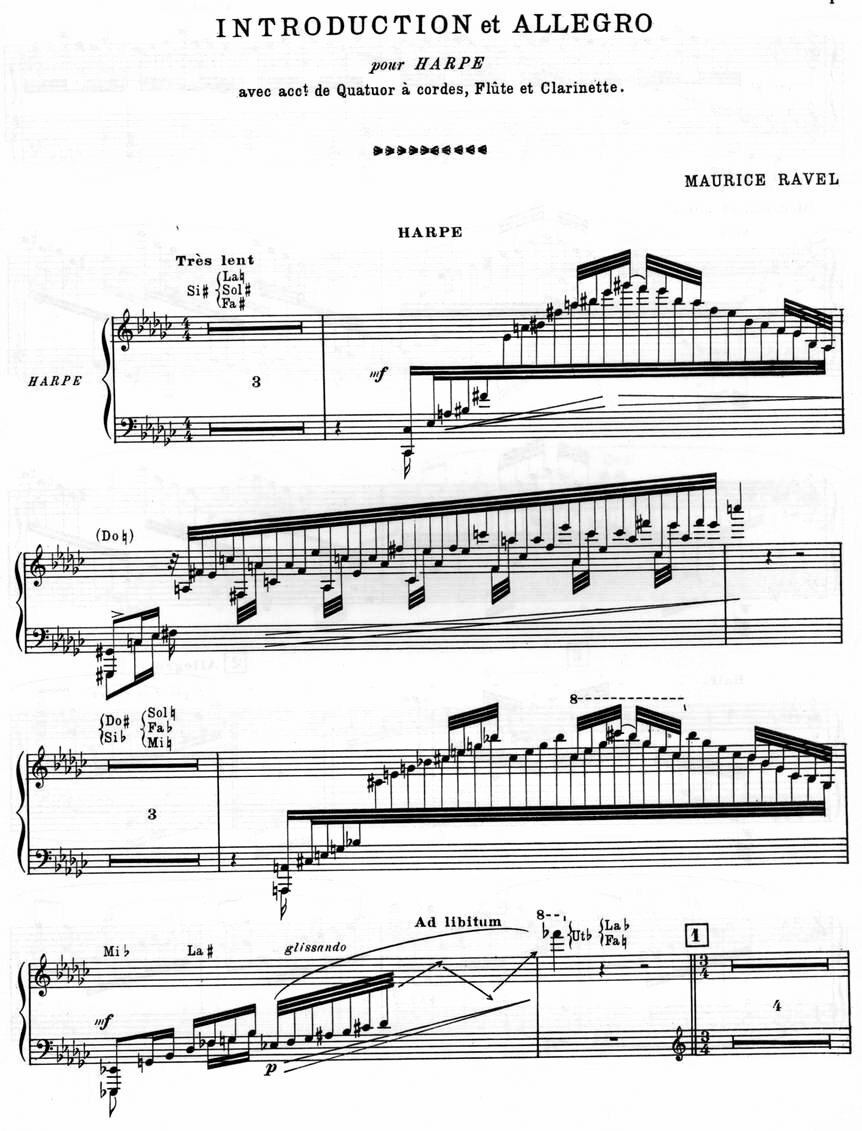Page 1 of 1
cross staff gliss + hairpin
Posted: 29 Jan 2022, 19:18
by MichelRE
A question regarding harp glissandi:
When I have a glissando that crosses from one staff to the other, that is accompanied by a hairpin, where do I place my dynamics?
Normally I'd place all harp dynamics between the staves of its grand staff.
But with a glissando, would I let the hairpin cross the glissando line?
the first dynamic would be above the starting note, but below the ending note, and the hairpin would be between the staves? With the gliss. line crossing from one staff into the next?
Re: cross staff gliss + hairpin
Posted: 30 Jan 2022, 23:44
by John Ruggero
I believe that letting the gliss. line cross through the hairpin is acceptable, but I would prefer to angle the hairpin up paralleling the gliss. line so they don't intersect.
Re: cross staff gliss + hairpin
Posted: 31 Jan 2022, 15:01
by MichelRE
Thanks John. That's what I ended up doing after the fact.
I looked up a few more recent scores, and noticed that the hairpins in the harp parts were often surprisingly far from where I'd normally have placed them for other instruments. LOTS of tilted hairpins, lots of hairpins completely above the staff, and LOTS of hairpins starting inside one staff and ending inside another.
Re: cross staff gliss + hairpin
Posted: 31 Jan 2022, 15:29
by RMK
Why not ask a harpist what they would prefer?
When I was a copyist for William Schuman, he would always have a harpist check over the part before giving final approval.
Re: cross staff gliss + hairpin
Posted: 01 Feb 2022, 14:03
by OCTO
The best would be to see your example, actually.
Maybe this would help?

- RavelIntroHarpMusic__39573.1508527175.jpg (173.1 KiB) Viewed 3487 times
Re: cross staff gliss + hairpin
Posted: 01 Feb 2022, 14:10
by OCTO
Or this:
Symphony No. 9, Ralph Vaughan Williams

- afsfdas.png (24.9 KiB) Viewed 3486 times
Re: cross staff gliss + hairpin
Posted: 01 Feb 2022, 19:18
by JJP
As I've said in another post, I do most of my work on music that is to be sight-read. So hear my perspective through that lens.
Where possible, I prefer the Vaughan Williams example. It's easily readable and the information is where the performer expects to find it. I generally dislike angled hairpins if they can be avoided. It upsets the horizontal and vertical alignments and spacings that performers use to quickly process information. Angled hairpins can also create a lot of visual "noise" interrupts the eye moving smoothly across the page. However, there are cases where that may not be true or where there are no better solutions.
In the Ravel example, the hairpins, when quickly glanced, may cause a split-second to process because they are not in their typical position and orientation. That could lead to a hesitation by the performer that affects the performance.
If the bottom stave of the Ravel example were a studio recording, I may not begin the hairpin until after the notated pitches of the glissando. It starts at piano and diminuendos, so delaying that hairpin for clarity won't change the sound by a perceptible amount. However, this depends on the situation, the composer, and the musical context. I fully realize that this alteration may be an anathema in other contexts.
Re: cross staff gliss + hairpin
Posted: 02 Feb 2022, 13:37
by OCTO
In my opinion, both examples are perfectly clear to my eyes.
I have never had a visual problem with neither angled hairpins nor placing them inside of the staff system.
Yet, in the case of angled hairpins, they are more visible when placed on the staff than non-angled hairpins. In the Ravel's case, the hairpins really contribute to easy sight-reading than making it more difficult. It is easy to follow the pattern, timing of the hairpin and distribution of pitches and hands. It would be difficult to imagine more clear notation of the hairpin than how it is notated.
Re: cross staff gliss + hairpin
Posted: 02 Feb 2022, 16:10
by John Ruggero
While I wholeheartedly agree with JJP's desire to place musical information where and how it is expected by a player, which was a main theme of Arnstein's philosophy of notation, I agree with OCTO that what Ravel has done is completely expected and the normal and best way to notate this example for all situations.
It is also clear that general nature of the diminuendo and the constant changes of direction caused Vaughan Williams to place the hairpin as he did, there being really no other alternative. I am disregarding the slight slope to the expressions and hairpin in the Vaughan Williams as possibly an engraver's error or a misguided attempt to imitate the composer's manuscript where the slope (if it exists) might have been a subconscious reaction to the situation. I don't think that this kind of thing should be preserved in engraving since it needlessly complicates the notation for the performer, which is exactly what JJP wants to avoid.